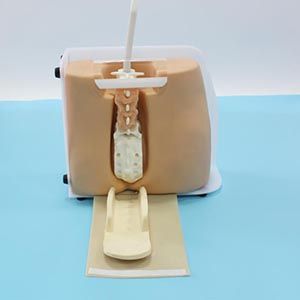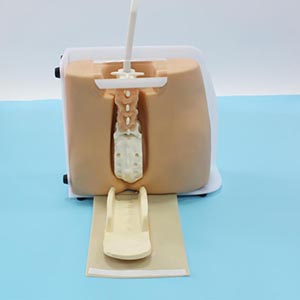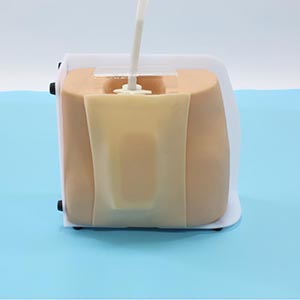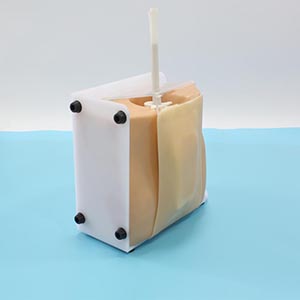ADA MED SUPPLY LIMITED
Phone:+86 19937901373
Tel:+86-0379-65160607
Email:adaanatomy@adaanatomy.com

Article tag: Spinal puncture model BIX-L60 Medical puncture training model

Spinal puncture (also known as lumbar puncture) is a common clinical procedure that is widely used to diagnose and treat a variety of conditions, such as spinal fluid examination, anesthesia, and drug injection. However, due to the high technical requirements of the procedure and the relatively sensitive operation area, there is a high risk of spinal tap failure, which can lead to nerve damage, infection, or other complications. With the frequent occurrence of medical accidents, more and more medical institutions begin to use spinal tap model for simulation training. Can such an approach effectively reduce clinical errors and thus improve medical safety? We analyze from the perspective of market trends, industry experts' opinions and data support.
1. Market trend: The rapid growth of the medical simulation market

With the frequent occurrence of medical errors, there is an increasing demand for efficient and reliable training tools in the medical industry. The medical simulation market, especially spinal puncture simulation training equipment, is experiencing rapid growth. According to the market research report, the global medical simulation market is growing at an average annual rate of more than 15% and is expected to reach a market size of $6 billion by 2027.
As an important part of medical simulation, spinal tap simulation model is widely used in major medical institutions, medical schools and training centers. There are already a number of highly simulated spinal tap models on the market that not only have realistic anatomy, but also simulate different clinical scenarios to help doctors perform repeated practice in a risk-free environment.
Data support: According to a medical education research institute, doctors trained with the spinal tap model have a 25% reduction in errors and a 20% reduction in complications. This result highlights the important role of the model in practical clinical training.
2. What industry experts say: The clinical value of model training

Industry experts generally agree that the introduction of the spinal tap model not only helps to improve the accuracy of the procedure, but also significantly improves the clinical judgment ability of the doctor. A well-known anesthesiologist said, "Spinal tap technology requires doctors to have a high degree of anatomical knowledge and precise operating skills, and traditional teaching models are difficult to simulate complex clinical situations." By using highly simulated simulation models, physicians can practice a lot in a safe environment and reduce errors in clinical operations."
Experts point out that spinal tap is not only a technical issue, but also involves clinical judgment, the timing of the procedure and the prediction of complications. Through simulation training, doctors can quickly make the best decision in the face of different pathological situations and reduce the risk of misoperation.
3. The actual effect of reducing clinical errors

Medical puncture training model
The effectiveness of the spinal tap model is not only reflected in the improvement of theoretical learning, but also in the improvement of practical operation. By training on the model, doctors can perform multiple exercises without touching the patient, enhance their familiarity with the anatomical structure, and master the choice of puncture Angle, depth, and puncture point.
The data back it up: A study of 200 junior doctors found that doctors trained using the spinal tap model increased success rates by 30% and reduced complication rates by 15%. This data shows that through simulation training, doctors are able to perform spinal taps more accurately and reduce the risk of improper procedures.
In addition, simulation training also helps doctors identify possible complications in advance and make a rapid response, which is particularly important for improving doctors' clinical emergency response ability. As the number of training sessions increased, the doctor's confidence and operational proficiency also improved significantly.
4. Conclusion: Improve safety and reduce errors
With the frequent occurrence of medical errors, the errors of doctors in spinal tap operation not only affect the safety of patients, but also increase the burden of the medical system. The introduction of spinal tap model undoubtedly provides a more efficient and low-risk training method for medical training. Through simulation training, doctors can improve their skills and judgment through repeated practice, and ultimately reduce the incidence of errors and complications. The growing demand in the market and the recognition of industry experts indicate that spinal tap models will play an increasingly important role in medical education and clinical practice in the future, becoming a key tool for improving the quality of care and ensuring patient safety.